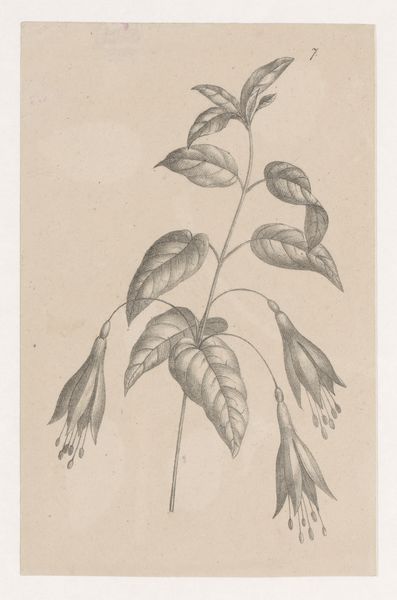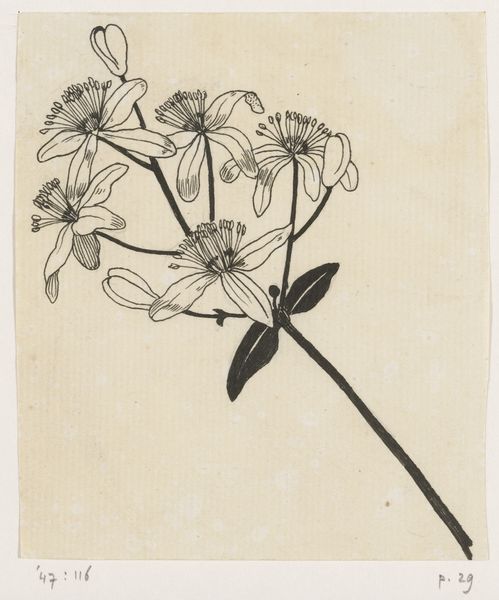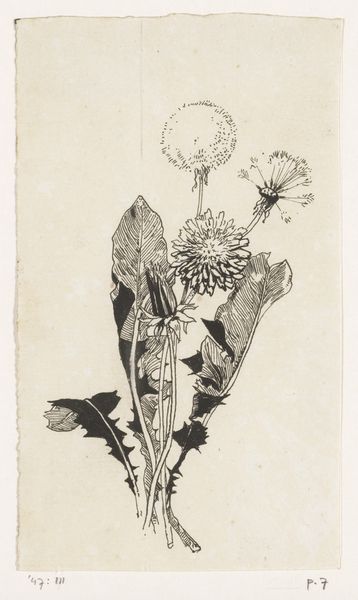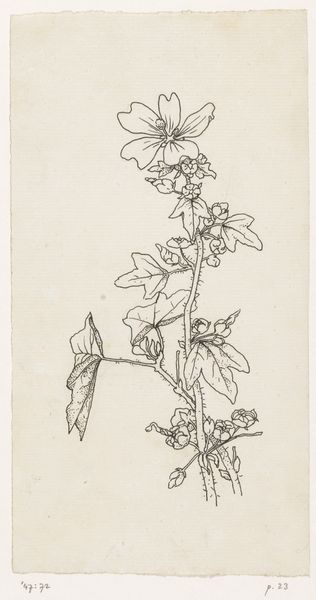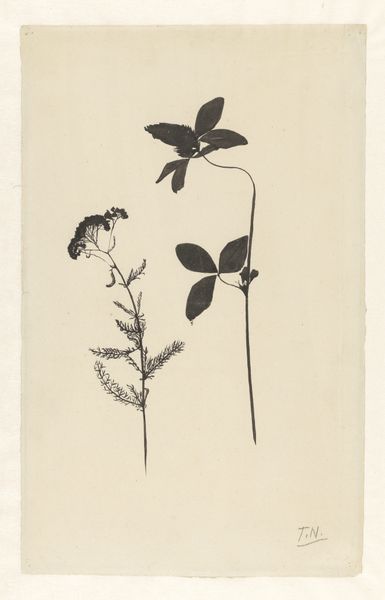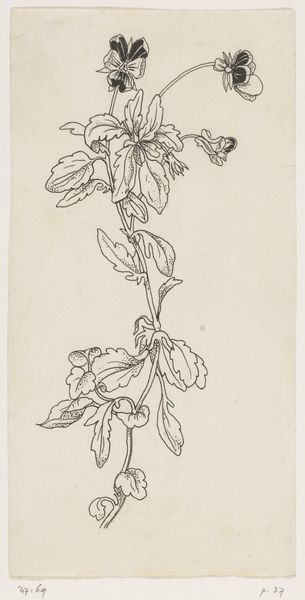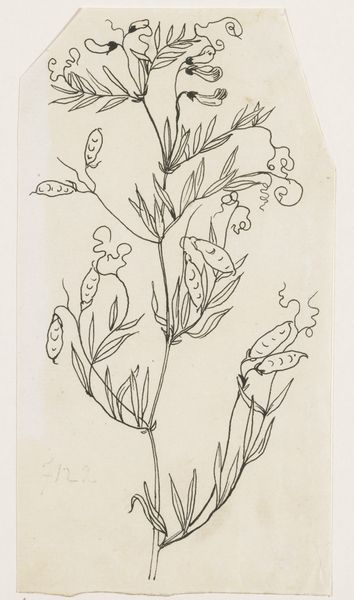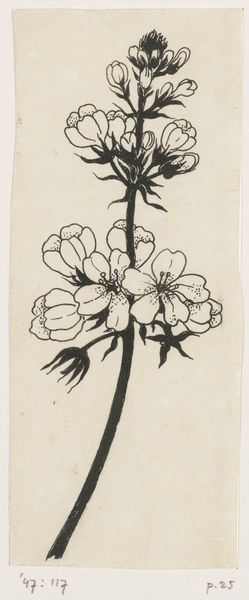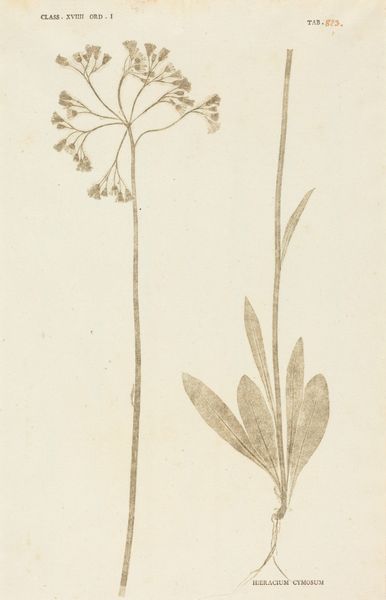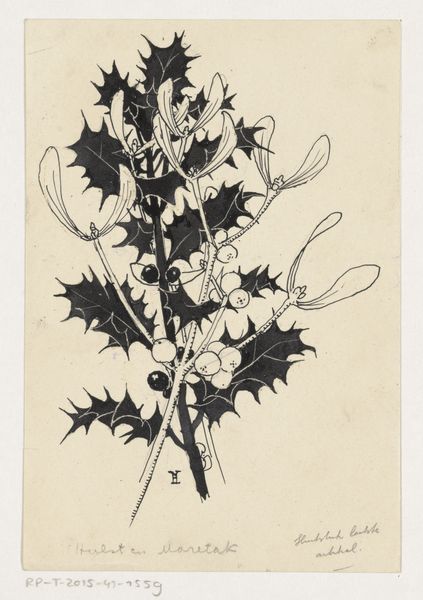
drawing, print, ink, woodcut
#
drawing
#
art-nouveau
# print
#
old engraving style
#
ink
#
ink drawing experimentation
#
pen-ink sketch
#
woodcut
#
line
#
sketchbook drawing
Dimensions: height 219 mm, width 152 mm
Copyright: Rijks Museum: Open Domain
Curator: This work, "Kamperfoelie," meaning Honeysuckle, was created by Willem Wenckebach, most likely before 1893. It’s currently held in the collection of the Rijksmuseum. The piece appears to be a woodcut, rendered in ink. Editor: The stark contrast of the black ink against the creamy paper creates an impactful image. There is an intense quality, in how those leaves and flowers reach. It feels poised between delicacy and starkness. Curator: Indeed. This work highlights the burgeoning Art Nouveau movement and Wenckebach's engagement with it. Art Nouveau embraced natural forms and a rejection of industrial aesthetics; seeing these characteristics, what socio-historical narrative emerges for you? Editor: I'm particularly drawn to the labour aspect of it, thinking about the materials chosen—the ink, the paper, the wood—and how they influence the final result. The decision to use woodcut immediately speaks to an interest in the potential for mass production and wider distribution. Curator: And Wenckebach’s rendering of the honeysuckle is critical. This was a period deeply engaged with themes of beauty and decay, particularly concerning women. The flower itself could act as a metaphor—the perceived short bloom of youth, a critique on feminine roles and social expectation. Editor: Exactly! How the botanical subject gets depicted—that’s also material. Think about the time it took to carve each line. It is not just what's depicted but the labor embedded within that gives it significance. We have this interplay between the botanical subject and the social forces in this precise historical moment. Curator: So by looking at the final result – this stylized drawing, the artist situates the labor of crafting within a commentary about femininity and fleeting beauty, connecting gender expectations and the meticulous making of an object. Editor: Precisely! It gives "Kamperfoelie" multiple readings – a love of craft, mass production, the natural world, and those contemporary ideas around gender. The beauty of these artworks are how material processes intersect with critical conversations about being, culture and labour. Curator: It has certainly given me a new appreciation for how Wenckebach has weaved production and cultural observation within his “Kamperfoelie." Editor: It's always worth keeping in mind that even simple images like this speak volumes about the socio-economic moment.
Comments
No comments
Be the first to comment and join the conversation on the ultimate creative platform.
